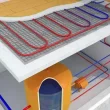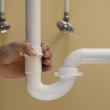Technology is changing every industry, and the neonatal intensive care unit (NICU) sector is no exception. With babies needing more around-the-clock care, these technologies become essential in detecting early health problems and ensuring parents have enough time for recovery.
Newborn babies requring intensive medical care are usually put in the NICU, wherein their unique needs are monitored constantly. The NICU has innovative technologies and skilled health professionals who provide exceptional care for the tiniest patients.
This article discusses the technologies the NICU uses to provide specialized baby care and outlines the essential technological advancements supporting critically ill babies in NICUs.
Table of Contents
Cardiopulmonary monitor
Each infant in the NICU will wear a cardiopulmonary device. The system comprises four wires with multiple sensors attached to the baby. These include two on either side of the chest, one on the lower belly and one on the thigh.
These sensors are wired and designed to pick up every heartbeat. They send this information to the monitor, which is captured and shown as a waveform on the screen. The device also monitors the infant’s pulse rate, respiration rate and oxygen levels in the blood, either via a cuff assessment or a real-time readout through an artery in the umbilicus, wrists or foot.
A pattern viewed on the monitor is created from an artery measurement. This continuous blood pressure reading is usually employed during the start of a NICU stay and in more severe circumstances.
A cardiopulmonary monitor ensures the baby’s blood pressure does not fall too low. Just after childbirth, low blood pressure in premature babies is standard due to an illness, depletion of blood or liquid, or even by some drugs.
Recent data reveals hypertension occurs in 20% of premature infants within the first 48 hours of childbirth. Taking advantage of a cardiopulmonary monitor empowers nurses to mitigate potentially harmful complications and conduct treatments to help premature babies develop in total health.
Pulse oximeter
The physician might recommend using a pulse oximeter if a newborn exhibits symptoms of shortness of breath or has a lung or cardiovascular disease. Otherwise known as Pulse Ox, the pulse oximeter monitors the saturation of oxygen carried in the baby’s red blood cells.
Why do NICU babies need a pulse oximeter? Most newborns have solid hearts and enough oxygen in their blood at birth. However, research shows one baby in every 100 suffers from a congenital heart defect, with 25% of those having a critical congenital heart defect.
Reduced oxygen levels in newborns with serious CHDs necessitate surgery or other interventions early in life. Occasionally, a baby needs help immediately in the first few days or weeks of life.
By measuring the oxygen level in the blood using a Pulse Ox, healthcare professionals can immediately detect complications before a baby becomes sick to improve overall health outcomes. A pulse oximeter aims to prevent hyperoxia and oxygen poisoning while ensuring that the tissues receive adequate oxygen.
Premature and neonatal infants are particularly susceptible to hypoxia and hyperoxia’s effects. A rise in harmful reactive oxygen brings on oxidative stress during hyperoxia and after reoxygenation following hypoxemia.
It also comes from the preterm neonate’s lack of antioxidants, which shield the cells from free radical damage. This can often result in the onset of vision impairment and respiratory disease.
As one of the NNP facts learned by students studying neonatal nursing at Baylor University, preterm neonates undergo sporadic episodes of hypoxia and hyperoxia. This means monitoring the oxygen saturation hemoglobin levels in these patients’ blood is necessary.
Continuous positive airway pressure
Neonatal patients with atelectasis blockage or respiratory distress can get breathing support from continuous positive airway pressure (CPAP). This machine uses a compressor to supply oxygen content and varying breathing pressures while avoiding the risks of complete endotracheal intubation and mechanical ventilation.
The benefits of applying continuous positive pressure to the trachea of a voluntarily breathing newborn include maintaining enough functional residual capacity within the alveoli to prevent atelectasis and enhancing oxygen and carbon dioxide transfer within the pulmonary veins.
Like a nasal cannula, CPAP continuously pressurizes air into a baby’s nose, keeping their airways accessible and preventing apnea. Babies who can breathe sufficiently not to require a ventilator frequently use CPAP since it may produce higher pressure than a nasal cannula.
So, why do NICU babies need CPAP in the first place? Premature babies can experience breathing problems because their lungs may not fully develop. For infants with respiratory-related disorders, CPAP provides non-invasive breathing aid. This way, they can protect themselves from respiratory disease syndrome and causes of apnea of prematurity.
Computed tomography scan
A computerized X-ray machine is used in a computed tomography (CT) scan to gather several images from the patient. A three-dimensional representation of the area of interest is produced by combining these photos, which are captured from various angles.
A child’s blood veins, organs, bones and soft tissues can all be seen in great detail thanks to CT scans. They are frequently employed with newborns to identify stomach pain or assess for injuries following trauma. It is among the most popular ways to collect chest images and is particularly helpful in babies for acquiring comprehensive pictures of the heart and blood arteries.
Nurses can use these photos to identify many illnesses, such as pneumonia, lung tumors, lung injuries and birth anomalies. Moreover, CT scans also help nurses monitor responses to treatment and inflammatory disorders and to assess blood vessels throughout the body.
Compared to general X-rays, CT scans are more comprehensive and sometimes done to evaluate bleeding inside a baby’s head. A CT scan is often performed in a particular room and requires the baby to be sedated to ensure they remain motionless during the evaluation.
Taking advantage of innovative technologies in NICUs
The pace of technological change in the healthcare industry will continue to grow as the digital revolution speeds up. It’s important to stay on top of these changes and developments through continuous education so that nurses are informed on how to use these innovative technologies.

















